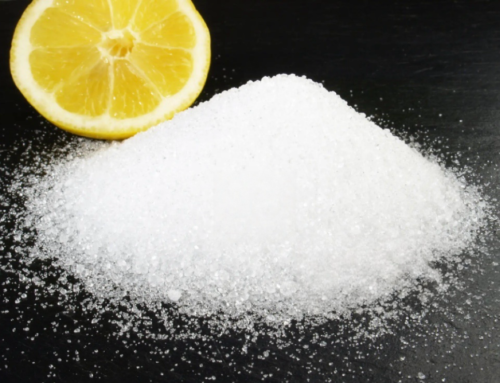Cheese Processing Overview

Cheese is a dairy product made by separating the water from milk, yielding a product rich in concentrated proteins, lipids, and other components with a distinct flavor and fragrance. The process of making cheese begins with the seeding of starter culture into pasteurized and cooled milk.
In the first step, the processor warms the milk in a vast tank to attain a proper temperature before creating cheese. This method employs thermophilic and mesophilic types of bacteria.
Mesophilic bacteria thrive at temperatures between 20 and 45 degrees Celsius to prepare mellow cheeses like Cheddar, Gouda, and Colby. It is common to add additives like phosphates in this step of cheese processing. Thermophilic bacteria grow at a temperature between 45 to 122 degrees Celsius, which aids in preparing sharper cheeses like Romano, Parmesan, and Gruyère. It lowers milk pH to a level that allows the rennet enzymes to operate correctly. Rennet promotes the adequate coagulation of the milk proteins, resulting in curd.
Afterward, the processors slice and cook the curd to separate the whey from the cheese. The whey is then separated, and the processor squeezes the curd again to drain the whey properly. After draining the cheese curds completely, these are placed in the molds to form the final shape of the cheese. Each cheese type requires different handling of the curd. Curds that have a low pH and soft texture are ladened into bags to drain overnight.
Then curds are enforced into the final cheese shape after draining the additional whey. Afterward, the application of brine keeps it fresh and gives a characteristic taste to the cheese. The last step in cheese processing is aging which aids in the development of the cheese’s distinctive taste and fragrance.
Chemicals Required in Cheese Production
Different chemicals compounds, along with rennet enzymes, are important and required for cheese production. These important compounds include:
- Calcium chloride (CaCl2)
- Sodium phosphate
- Calcium phosphate
- Saltpeter (NaNO3 or KNO3)
- Carbon dioxide (CO2)
Phosphate Ingredients Used in Cheese Production
Several phosphate Ingredients play a vital role in the processing and preparation of different food products. These are also the key determinants factor in cheese processing. Following are some phosphates used in cheese processing:
1.Calcium phosphate
2.Disodium phosphate
3.Sodium tripolyphosphate
4.Tetrasodium pyrophosphate
Role of Calcium Phosphate in Cheese Production
Phosphates and their salts act as emulsifiers in manufacturing dairy products, such as processed cheese. Calcium phosphate binds casein proteins together by forming cross-links between them, due to which phosphate use in cheese production is of great importance. Calcium (Ca) and phosphate (PO4) is milk salts that play a significant role in milk rennet coagulation, reform the texture, and play their part in buffering cheese. Adding calcium neutralizes residues on casein which have a negative charge, thus enhancing the aggregation of rennet micelles and decreasing the time required for milk coagulation.
Low calcium concentrations also enhance gel stiffness. The pH of drained whey and pace of acid formation determines the mineral content of cheese. pH and the number of undissolved milk salts influence the texture of cheese. The use of colloidal calcium phosphate plays an essential function in buffering during the acidification of milk and cheese.
Role of Sodium Phosphate in Cheese Production
Sodium phosphates, either alone or in combinations, are widely employed in the production of process cheese. Sodium phosphates sequester calcium ions in the cheese, which solubilizes the protein. It also increases its hydration and swelling, enables fat emulsification, and regulates and stabilizes pH. Sodium phosphates are important in cheese manufacturing because they impact the end cheese product’s chemical, physical, and microbiological characteristics. Although sodium phosphates are not true emulsifiers in the technical sense, they are not surface-active compounds still included in the category of “emulsifying agents.” The emulsifying chemicals transform the insoluble starting cheeses into liquid during the melting process.
The sodium phosphate emulsifying ingredients are generally added as dry solids or a mixture of concentrated disodium phosphate and trisodium phosphate solutions from separate heated storage tanks in established process cheese preparation methods. The addition of solid sources of sodium phosphates can produce phosphate buildup in a cooker or blender because solid phosphates do not fully dissolve and cling to the augers. The cheese burns throughout the cooking cycle due to phosphate buildup on the cooker’s interior or blender.
Undissolved phosphates give processed cheese a lumpy texture. Additionally, when a solid source of sodium phosphate does not completely dissolve in the process mixture, the undissolved solid sodium phosphate adds to the solids removed by filters.
How is Blended Phosphate Better Than Single Phosphate?
Phosphates and citrates are polyvalent anions with a high water-adsorption capacity. Calcium binds to protein molecules in cheese, giving them a negative charge. The addition of blended phosphates instead of single phosphate raises the pH of the cheese as well. It also increases the negative charge and the pH value that causes the proteins to absorb more water. In the insoluble component of processed cheese, the concentration of these elements is twice as high as in natural cheese. Moreover, blended phosphates also exhibit anti-spoilage characteristics. It extends the shelf life of cheese compared to single phosphates that don’t have antibacterial properties, making blended phosphates a better choice than single phosphate.
Different phosphate salts are playing a vital role in the processing of several food products. These are becoming a crucial ingredient in the cheese processing industry as emulsifying agents. These are responsible for the cheese’s particular taste and homogeneous texture by binding the milk proteins and other constituents together. Additionally, blended phosphate salts are more efficient and effective than single phosphate salt because of their way of mechanism.
Reference
1.https://www.preparedfoods.com/articles/117995-developing-dairy-products
2.https://www.cheesescience.org/buffering.html
3.https://fbcindustries.com/how-dipotassium-phosphate-and-other-phosphates-improve-dairy-foods/
4.https://www.researchgate.net/publication/
5.https://www.journalofdairyscience.org/article/S0022-0302(93)77504-9/pdf




